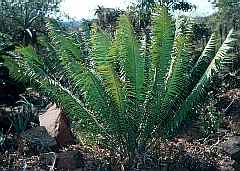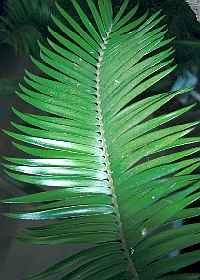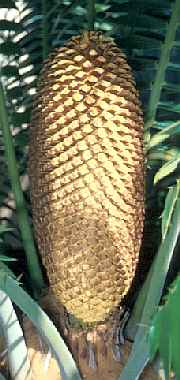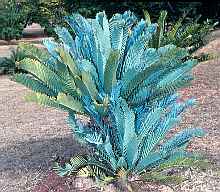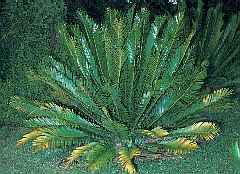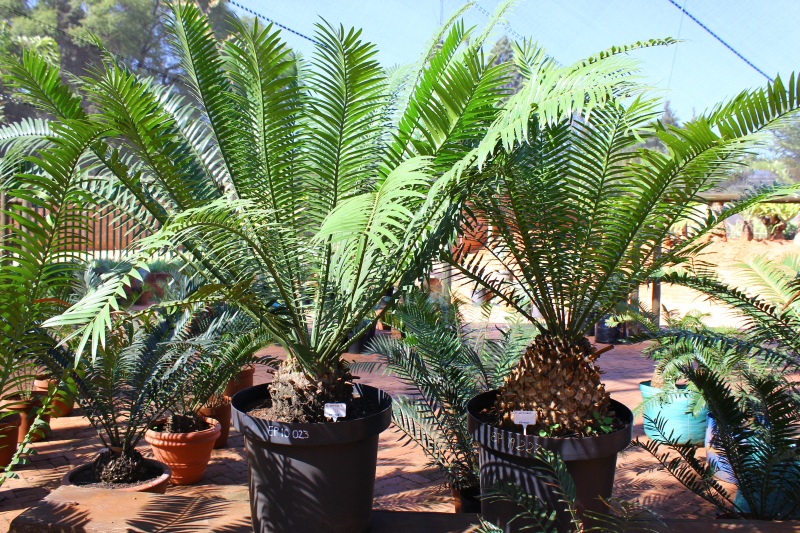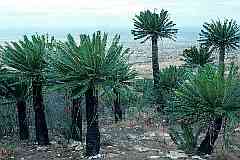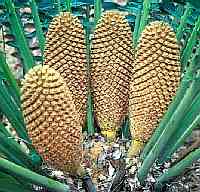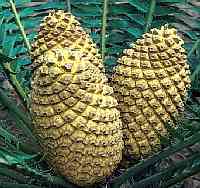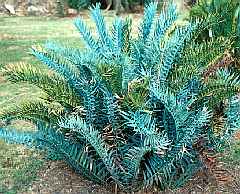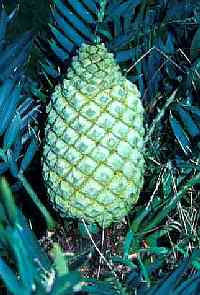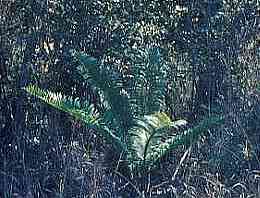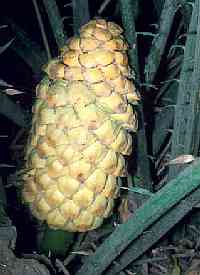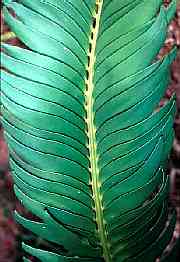Etymology:
Latin nubis, black, and montanus, mountain
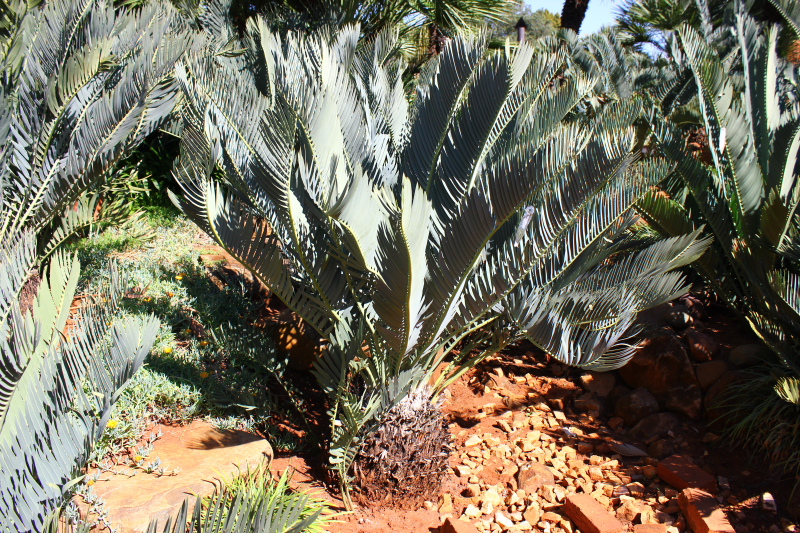
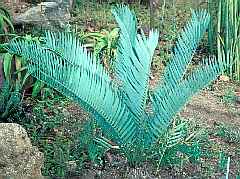
Description:
Plants arborescent; stem 2.5 m tall, 35-40 cm diam.
Leaves 110-140 cm long, blue or silver, dull, strongly keeled (opposing leaflets inserted at 45-70° on rachis); rachis blue, straight, stiff, slightly twisted in some leaves; petiole straight, with no prickles; leaf-base collar prominent; basal leaflets reducing to spines (few).
Leaflets lanceolate, concolorous, overlapping upwards, not lobed, insertion angle acute (less than 45°); margins flat; upper margin entire (no teeth), or lightly toothed (1-3 teeth); lower margin entire (no teeth), or lightly toothed (1-3 teeth); median leaflets 17-25 cm long, 15-25 mm wide.
Pollen cones 2-5, narrowly ovoid or fusiform, bluish-green, 25-40 cm long, 5-11 cm diam.
Seed cones 1-3, ovoid, blue-green, 30-40 cm long, 18-20 cm diam.
Seeds ovoid, 35-38 mm long, 23-30 mm wide, sarcotesta red.
Distinguishing features:
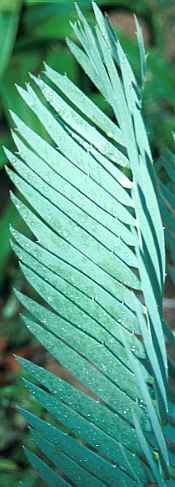
Most similar to E. cupidus, differing in the larger and arborescent habit and the longer leaves with longer petioles and often recurving tips. Apical cone-scales in both seed and pollen cones of E. nubimontanus are sterile and extended, unlike those of E. cupidus, and cones are glaucous rather than dark green. Fully adult leaflets also tend to be entire.
Distribution and habitat:
South Africa - Transvaal Natal
Conservation:
1997 IUCN Red List of Threatened Plants category E, listed as both Encephalartos nubimontanus and E. venetus
Historical notes:
Described in 1995 by South African horticulturist P.J.H. Hurter.
Reference: The Cycad Pages




